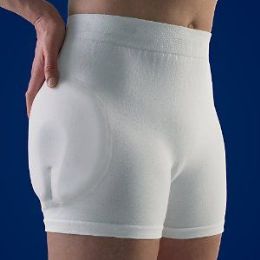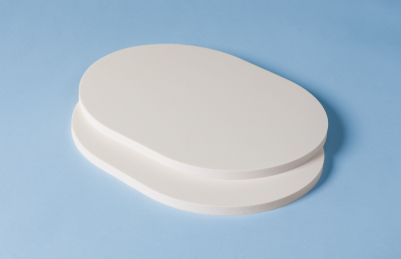









How do I Take Care of My New Hip?
After you have hip replacement surgery, you will need to be careful how you move your hip, especially for the first few months. Therefore, it is very important that you take care of yourself by following hip precautions for as long as your doctor tells you to. Ignoring these precautions will increase your risk of hip dislocation. Since hip or joint pain is not always associated with the dislocation it can go undetected, and following precautions is the best way to make sure this does not happen. Basically, certain movements are restricted such as crossing your legs, twisting your leg in or out, and bending too far forward. There are devices that will help you tremendously during the time that you need to follow these precautions.
What Medical Devices Will Help Following Hip Surgery?
Hip abduction pillows, sometimes called wedges, are most commonly used after hip surgery when keeping your legs from moving is required, and to hold your legs apart for proper hip alignment. Whether you need some comfort and cushion while you sit or sleep, wedges feature a unique design that provide direct support, allow air to circulate between your hips, and decrease pressure and strain on the affected areas. They are also useful any time you need to keep your legs still.
Hip abductor wedges are shaped from foam for maximum support, with soft closure straps at the thighs and sometimes at the calves to keep it in place and to provide easy adjustments. The wedges help prevent rolling and turning that can cause damage to new-healing tissue. They also come in a variety of sizes, with an hourglass design that promotes parallel alignment of your legs and hips for optimal healing after surgery. Pillows, or wedges, are ideal for recovery centers and physical therapy clinics, as well as at home.
Hip chairs are designed with a higher seat to eliminate the need for you to flex your hip when getting up or sitting down. It is an ideal solution when you are recovering from hip replacement surgery, if you are suffering from hip or knee arthritis, or if you have other ailments that make sitting or standing difficult. They feature a padded back and seat for added comfort, and the angled seat makes it easy to sit down and stand up.
Hip kits help you to regain independence by enabling you to avoid bending when you bathe, dress, and retrieve items. There are several items in a hip kit which can include, but are not limited to, a sock aid, dressing stick, reacher, shoe horn, long-handled bath sponge, and elastic shoelaces. A dressing stick is a lightweight, thin rod with hooks at each end to help you get dressed without bending or reaching for your clothes. A reacher is commonly available in lengths ranging from 24 to 32 inches, allowing you to pick up or reach objects that would be difficult to grab without extending your body or bending. Look carefully at what each hip kit contains before purchasing one to ensure it includes everything you require for your unique healing situation.
An elevated toilet seat, also called a raised toilet seat, allows you to sit higher on the toilet, making it easier to sit down and to get back up. It is normally two to five inches tall, and keeps your legs internally rotated in the proper position. There are several styles to choose from, depending on your specific needs.
Hip protector briefs are recommended for those at risk for falling or for suffering hip fractures. The critical hip area on each side is covered by a durable, soft, low-profile pad that protects your hip bones from damage. The pads are virtually undetectable under your clothing and can be removed or left in place.
Rehabmart is proud to offer a wide variety of quality items for hip fractures from well-known manufacturers, such as North Coast, Sammons Preston, Mobility Transfer, Maddak, Confortaire, Posey, ADL Essentials, Restorative Care of America, DeRoyal, Hausmann Industries, Chattanooga and others.
Mike Price, OT
Rehabmart Co-Founder & CTO